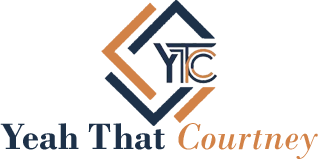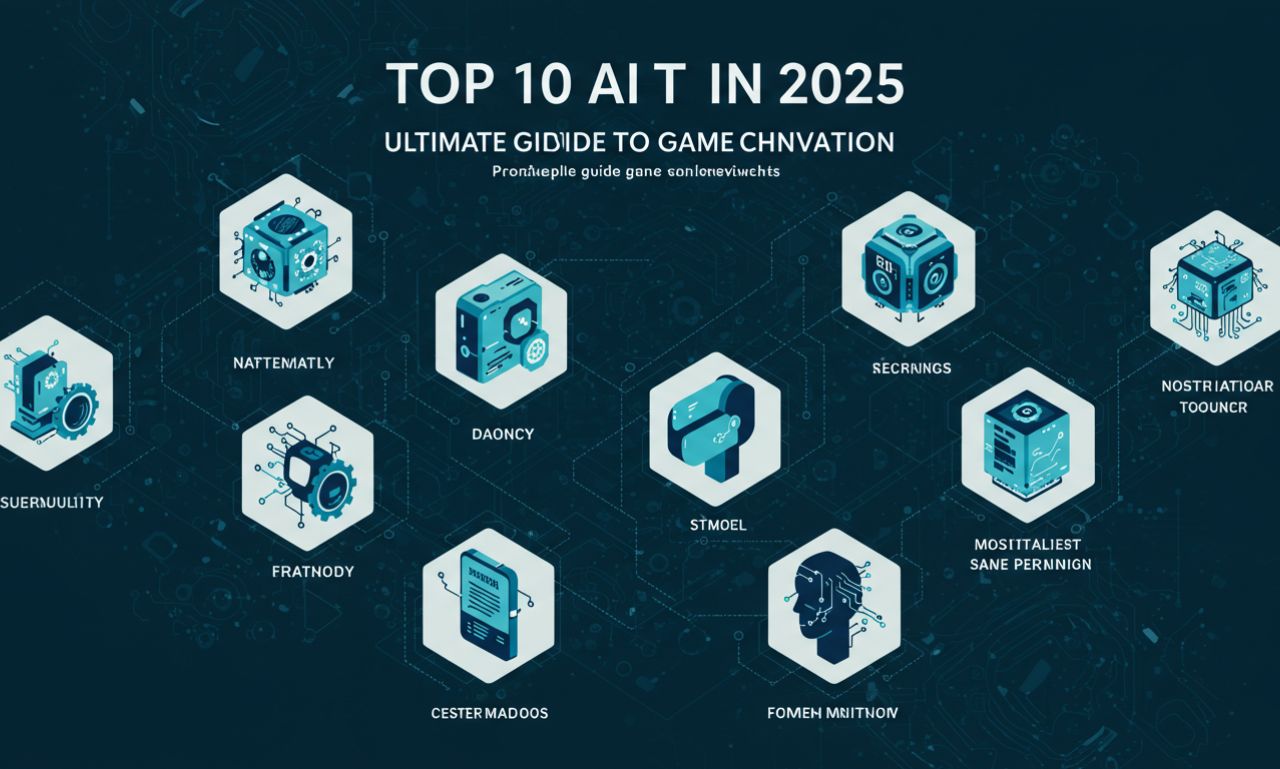Artificial Intelligence (AI) continues to redefine how we work, create, and interact with technology. In 2025, the AI landscape is more competitive and innovative than ever. From advanced chatbots to creative design tools and business automation platforms, the top 10 AI tools in 2025 are transforming industries across the board.
Whether you’re a marketer, developer, researcher, or casual user, this guide will help you understand which tools are leading the pack and why.
Introduction to the Rise of AI Tools in 2025
AI is no longer just a futuristic concept—it’s now embedded into everyday tools and platforms. In 2025, adoption has accelerated in areas such as:
-
Customer service automation
-
Content creation
-
Code generation
-
Data analysis
-
Visual and video production
These tools were chosen based on several factors:
-
Performance and innovation
-
User-friendliness
-
Scalability
-
Integration capabilities
-
Community and support
Let’s explore the top AI tools that are dominating the scene this year.
1. ChatGPT by OpenAI (GPT-4.5 and GPT-4o)
Best for: Conversational AI, writing, brainstorming, education
OpenAI’s ChatGPT has remained a market leader thanks to constant upgrades. In 2025, its latest versions—GPT-4.5 and GPT-4o (Omni)—offer stunning improvements in reasoning, memory, voice interaction, and multimodal capabilities (text, image, audio).
Key Features:
-
Real-time voice conversations
-
Image and file understanding
-
Deep memory across chats (Pro users)
-
Plugins and custom GPTs
Use Cases:
Customer support, education, technical writing, marketing, coding, and more.
2. Google Gemini (Gemini 2 Ultra)
Best for: Multimodal AI in productivity and search
Google’s Gemini 2 Ultra, the successor to Bard, integrates tightly with Google Workspace and delivers real-time insights across Gmail, Docs, Sheets, and even YouTube.
Standout Features:
-
Multimodal reasoning (text + image + video)
-
Enterprise-ready security
-
Direct integration into Google Search
Great For:
Students, enterprise users, data researchers, and writers.
3. Claude by Anthropic (Claude 3 Opus)
Best for: Long-form writing, safety-conscious AI
Anthropic’s Claude models, particularly Claude 3 Opus, emphasize ethical use and context retention. It’s one of the best for working with long documents, sensitive data, and safe outputs.
What’s Special:
-
200K+ token context window
-
Focus on AI alignment and trust
-
Supports real-time collaborative writing
Popular In:
Legal, education, journalism, and consulting.
4. Midjourney v6
Best for: AI-generated art and creative visuals
Midjourney v6 has revolutionized digital art. Its Discord-based interface lets users create stunning visuals just from a text prompt.
Features:
-
Realistic and stylized rendering
-
Fine control over lighting and styles
-
Commercial use licensing
Used By:
Graphic designers, marketers, game developers, and illustrators.
5. Adobe Firefly 2025
Best for: Designers, creatives, and video editors
Adobe Firefly has integrated tightly with Creative Cloud apps like Photoshop, Illustrator, and Premiere Pro. The 2025 version supports AI-driven generative fill, text-to-image, and video effects.
Benefits:
-
Seamless creative workflows
-
Generative editing tools
-
Brand-safe design outputs
Best For:
Marketing teams, freelancers, and creative agencies.
6. Perplexity AI (Pro Search Assistant)
Best for: AI-powered research and citations
Perplexity AI is like ChatGPT meets Google Search—with sources. It delivers real-time, cited answers and research summaries, which makes it an ideal tool for academic and professional use.
Top Highlights:
-
Cited web results
-
Follow-up question threading
-
Chrome extension and mobile app
Ideal For:
Researchers, students, analysts, and writers.
7. Microsoft Copilot (AI for Office 365)
Best for: Corporate productivity and document automation
Microsoft Copilot brings AI to your daily workflows in Word, Excel, PowerPoint, and Teams. It helps you write documents, analyze data, and summarize meetings—all inside familiar apps.
Core Tools:
-
Excel formula generator
-
Email and meeting summarizer
-
PowerPoint slide creation
Perfect For:
Business professionals, analysts, and remote teams.
8. Runway ML Gen-3 Alpha
Best for: AI video generation and editing
Runway’s Gen-3 Alpha takes text-to-video to cinematic levels. It’s widely used in film production, marketing, and content creation for turning ideas into polished videos.
Key Tools:
-
Video-to-video style transfer
-
AI avatars and motion capture
-
Storyboard to video creation
Loved By:
Video editors, ad agencies, indie filmmakers, and YouTubers.
9. Notion AI 2.0
Best for: Productivity, knowledge management, and note-taking
Notion AI enhances the popular productivity tool with smart summarization, brainstorming, writing assistance, and task generation—all within your notes and databases.
Features:
-
Task automation
-
Document generation
-
Daily planner suggestions
Used For:
Team collaboration, content planning, and goal tracking.
10. Jasper AI
Best for: AI copywriting and brand-focused content
Jasper AI remains a go-to for marketers who need consistent, high-quality content. It includes a brand voice memory, making it ideal for large-scale campaigns.
Benefits:
-
50+ templates
-
SEO integration
-
Team collaboration tools
Useful For:
Digital marketers, content strategists, and ad copywriters.
Comparison Table: Features & Pricing of Top 10 AI Tools
| Tool | Best For | Pricing (Approx.) | Unique Feature |
|---|---|---|---|
| ChatGPT | Conversational AI | $20/month (Pro) | GPT-4o + memory |
| Gemini | Multimodal search | Free / Workspace | Workspace integration |
| Claude | Long-form writing | Free / Claude Pro | 200K token context |
| Midjourney | Digital art | $10–$60/month | Realistic image gen |
| Firefly | Creative design | Part of Adobe CC | Photoshop AI tools |
| Perplexity | Research | Free / Pro Plans | Cited search |
| Copilot | Productivity | Included in Office | In-app AI assistance |
| Runway ML | AI video | Usage-based | Text-to-video |
| Notion AI | Planning & docs | $10/month add-on | AI task assistant |
| Jasper | Copywriting | $49+/month | Brand voice training |
How to Choose the Right AI Tool for Your Needs
With so many powerful AI tools on the market, selecting the best one for your workflow can feel overwhelming. Here’s how to narrow it down based on your specific needs:
1. Define Your Goals
-
Content Creation: Try ChatGPT, Jasper, or Notion AI.
-
Research & Writing: Claude or Perplexity AI are ideal.
-
Design & Visuals: Choose Midjourney or Adobe Firefly.
-
Productivity: Microsoft Copilot or Notion AI are top-tier.
-
Video Production: Runway ML is a game-changer.
2. Evaluate Ease of Use
Some tools, like ChatGPT or Perplexity, require little to no setup. Others, like Adobe Firefly, may need some design experience.
3. Check Integration
Does it work with the software you already use? For example, Copilot integrates with Office 365, and Notion AI blends right into your existing workspace.
4. Consider Budget
-
Free tools: Perplexity, Gemini (basic)
-
Mid-range: Notion AI, ChatGPT Pro
-
Premium: Jasper AI, Runway ML, Adobe Firefly
5. Trial and Feedback
Most tools offer free trials or demos—test them out and see how well they align with your workflow.
AI Trends in 2025 to Watch
AI is evolving rapidly, and 2025 has seen several major trends:
1. Multimodal AI Becomes the Norm
Tools like GPT-4o and Gemini now handle text, images, and even voice inputs in a single session. Expect more platforms to follow.
2. Real-Time Voice and Video Interaction
Runway ML and OpenAI’s voice tools are making real-time interactions with AI possible—even for video creation and live audio chats.
3. Personal AI Assistants
From Notion to Copilot, AI assistants now manage meetings, emails, schedules, and project tasks seamlessly.
4. Ethical AI Development
Claude and others are pushing for aligned, safe AI with built-in safeguards and transparent outputs.
5. Industry-Specific AI Tools
More niche AI platforms are emerging—for medicine, law, education, and even agriculture.
Benefits and Risks of Using AI Tools
Top Benefits:
-
Enhanced Productivity: Complete tasks in a fraction of the time.
-
Creativity Boost: AI helps brainstorm and visualize new ideas.
-
Cost Efficiency: Automates jobs that used to require multiple tools or team members.
Potential Risks:
-
Over-Reliance: May reduce critical thinking or creativity.
-
Bias and Hallucinations: Some models still produce incorrect or biased content.
-
Privacy Concerns: Storing sensitive data on AI platforms needs careful handling.
To mitigate risks, always verify outputs and choose reputable providers that prioritize data privacy and safety.
FAQs about the Top 10 AI Tools in 2025
1. Which AI tool is best for beginners?
ChatGPT and Perplexity are beginner-friendly with intuitive interfaces and little to no setup required.
2. Are these tools safe to use with sensitive data?
Yes, but always read the platform’s privacy policies. Claude, for example, prioritizes safety and alignment.
3. Can I use more than one AI tool?
Absolutely! Many professionals use a combination—e.g., ChatGPT for writing, Midjourney for visuals, and Notion AI for productivity.
4. What is the best AI tool for marketers?
Jasper AI is designed for content marketing, but ChatGPT and Notion AI also offer strong capabilities.
5. How do I access tools like Runway ML or Adobe Firefly?
These are available via subscription. Some offer free versions with limited features or watermarks.
6. Will AI replace creative jobs?
AI enhances creativity, but human input is still vital for context, emotion, and originality.
Conclusion: Which AI Tool Should You Try First?
The top 10 AI tools in 2025 show just how far the industry has come—from writing assistants to cinematic video generators. The right tool for you depends on your goals, skills, and workflow.
If you’re just starting, try ChatGPT for writing and brainstorming, or Perplexity AI for research. For creatives, dive into Midjourney or Firefly. Business users can boost productivity with Microsoft Copilot or Notion AI.
These tools are not just tech trends—they’re transformative tools redefining how we work, create, and innovate.

